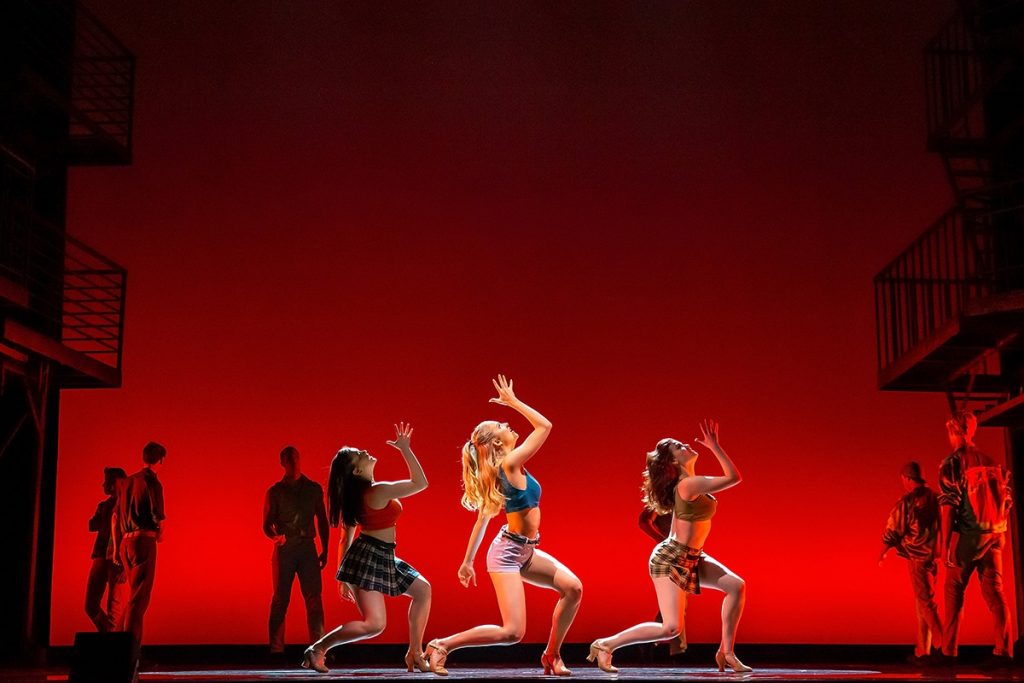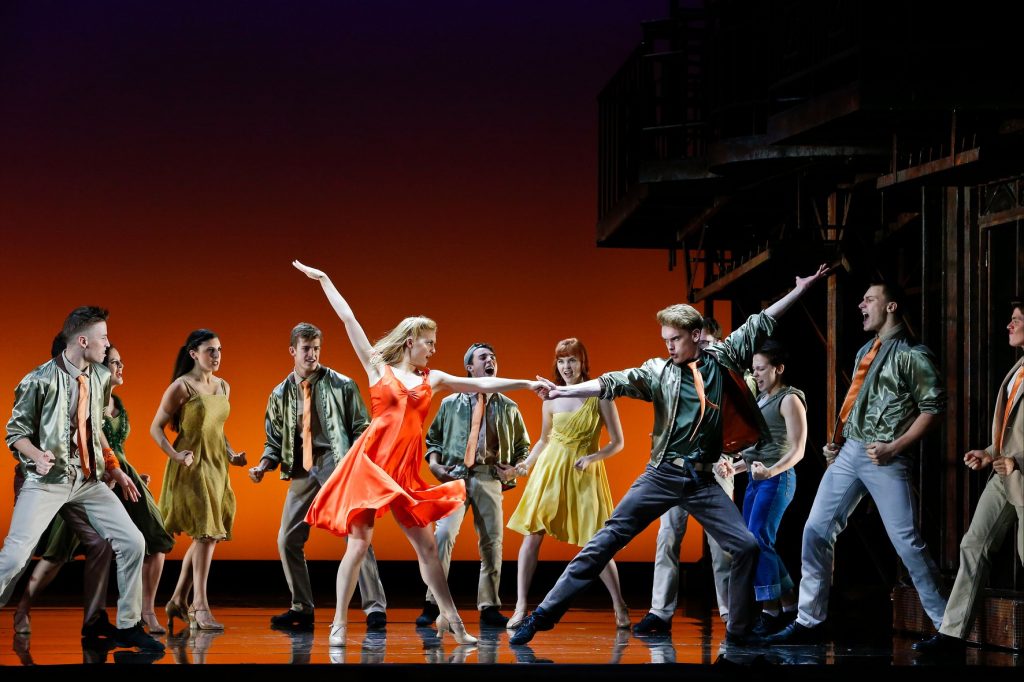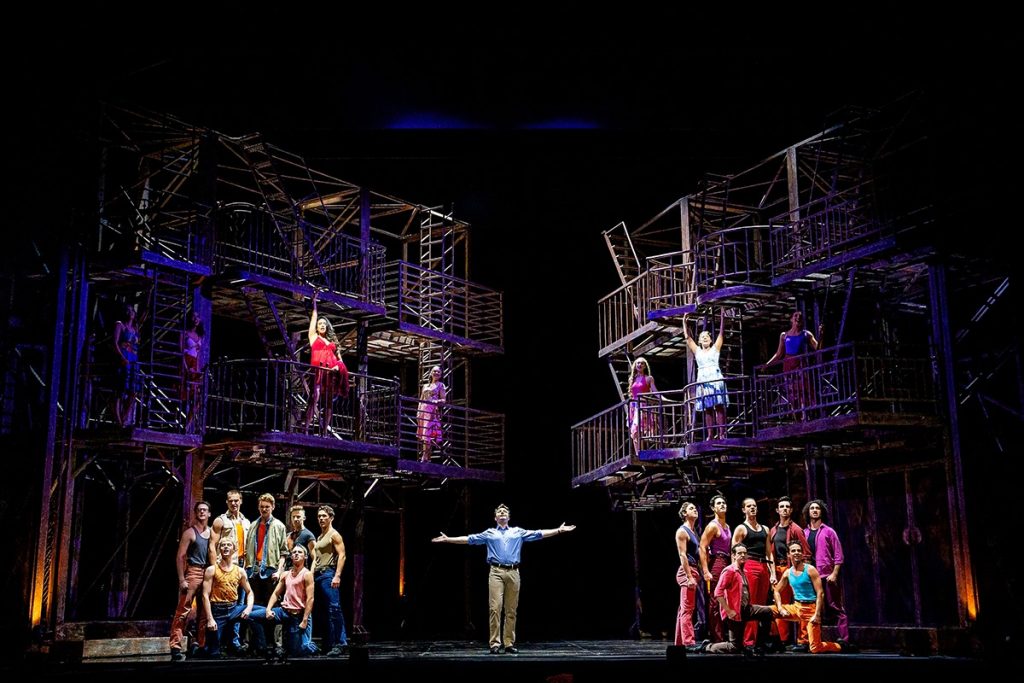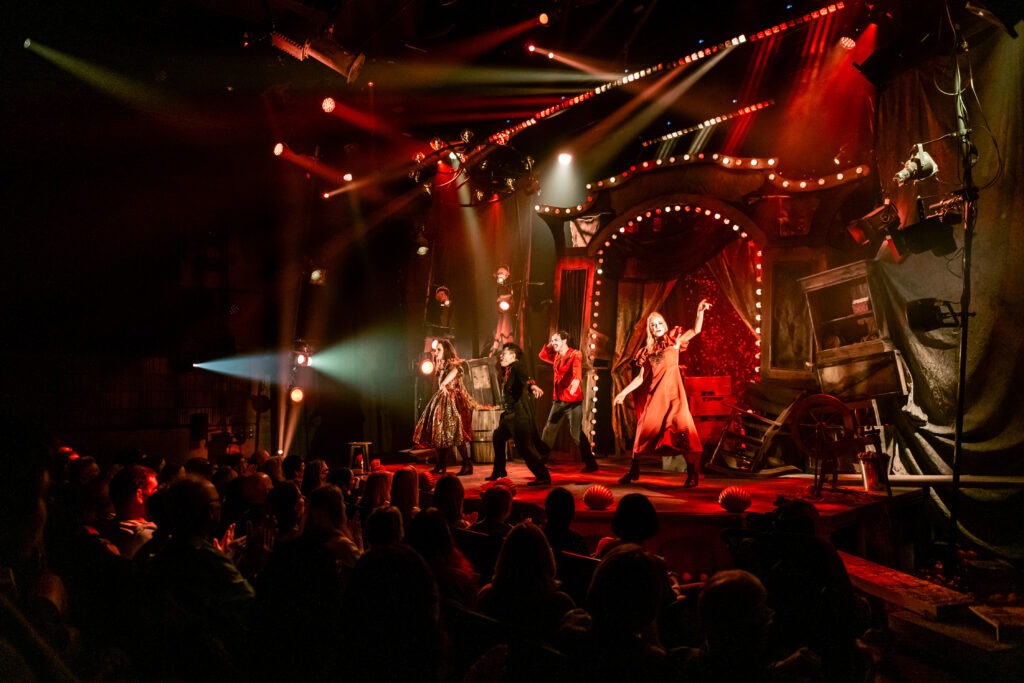
‘West Side Story’ // Opera Australia, GWB Entertainment and QPAC
‘West Side Story’ was classical.
Something’s coming – scratch that – something has arrived, and it is musical perfection. Opera Australia and GWB Entertainment, in association with QPAC, opened the BB Group Production of ‘West Side Story’ with all the class, skill and aesthetic this timeless musical deserves.
Originally presented on Broadway in 1957, the show is known by many as a reimagining of Shakespeare’s classic, ‘Romeo and Juliet’. With a plot that openly and honestly explores the issues of stigma, interracial marriage, immigration, the plight of women and even gender non-conformity, ‘West Side Story’ remains as relevant as ever, if not more so. The juxtaposition of gang warfare and elegant choreography makes a strong and relevant statement about the diversity and fragility of masculinity and gender expression in general.
In recent years the professional musical theatre has often relied heavily on the technical wow factor. However, this rendition of ‘West Side Story’ serves as a reminder of the power of basics. The show had no unnecessary smoke or lasers, a minimalist projected backdrop, and two simple scaffold set pieces that moved infrequently. Instead, set design by Paul Gallis included a high gloss flooring that created the illusion of depth, and alongside the scaffold and backdrop gave the appearance of a wet New York City street. The scaffolding itself was painted in neutral greys, allowing lights to be used and change the colour of the set in connection with the changing tone of the scenes.
Lighting design by Peter Halbsgut came to its peak in the musical numbers, with the use of silhouettes and clean spotlights that created various spatial illusions on the reflective flooring. In the interlude ‘Somewhere’, a stark bright whitewashed the stage and was perfectly fitting for the out-of-place nature of the number. This was another highlight of Halbsgut and Gallis’ coordination.
The classical nature of the musical was emboldened by an incredible orchestra led by Musical Director Isaac Hayward. As if the show had been plucked from a 1950s stage, the musicians were not only pivotal but one of a partnership with the choreography. These two elements are perhaps the most significant for a show like ‘West Side Story’, and the production team provided these aspects the care, precision and attention needed to give the production an air of timelessness.
A strong sense of realism was presented in the costuming by Renate Schmitzer, hair and makeup by Hannelore Uhrmacher, and props, which were a weakness of the production at times. Hairstyles remained relevant and appropriate, costumes appeared to be directly from the 1950s, and props were kept simple. However, as accurate as these elements were for the time period, they were lacklustre on the Lyric Theatre stage. The classical aesthetic could still have been maintained with some more over-the-top dresses and wigs, and it would have enlivened ‘America’ in particular.
That being said, this in no way detracted from the outstanding choreography and stage direction by Joey McKneely, and the performance of said moves by the entire company. Number after number, dancers were put to their paces with intricate dance moves, dynamic use of the stage, and symbolic storytelling. While it is difficult to find a single highlight of the production, ‘Gee, Officer Krupke’ was simultaneously engaging, funny and well-crafted. This number in particular raised the energy of the second act and required a number of eccentric performances from the male performers.
In the leading role of Maria, Brisbane local Sophie Salvesani agave an outstanding vocal performance. Alongside the loveable Nigel Huckle as Tony, the pair created a believable and endearing chemistry, even in the short time span in which the events of the plot unfold.
Although Maria and Tony are considered the principal roles, Anita, played by Angelina Thomson, and Riff, played by Noah Mullins, have a similar amount of stage time and can often create a stronger connection with the audience. Thomson’s portrayal of Anita was a highlight of the show; from her vocal choices to her exceptional danceability, Thomson carried the audience through her journey of rebellion, grief and extreme frustration. Mullins, too, presented strong vocals upped only by his incredible poise and body control in his dance numbers.
Anybody, portrayed by Molly Bugeja, made for an intriguing character in a modern rendition, considering the ongoing cultural discussions of gender expression. Bugeja was able to manipulate the masculine and feminine aspects of the choreography to create a character that was both unique and able to blend into the Jets gang.
Temujin Tera as Bernardo, Berynn Schwerdt as Officer Krupke, and Ritchie Singer as Doc were all sincere and considered in their performances. In fact, the entire ensemble was cohesive and first-rate.
With social divides a constant in the world, and at the forefront of the collective psyche, ‘West Side Story’ remains a relevant, necessary and timeless musical. This rendition maintains the classical beauty of musical theatre and makes no apology in highlighting the social injustices and themes of the plot. Stunning choreography, a world-class orchestra and great local talent; what more could one ask for?
‘West Side Story’ performs until Sunday, 22 August 2 2021 at Queensland Performing Arts Centre (QPAC). For more information visit QPAC’s website. Also, follow the official ‘West Side Story’ Australian and New Zealand tour on Facebook.










